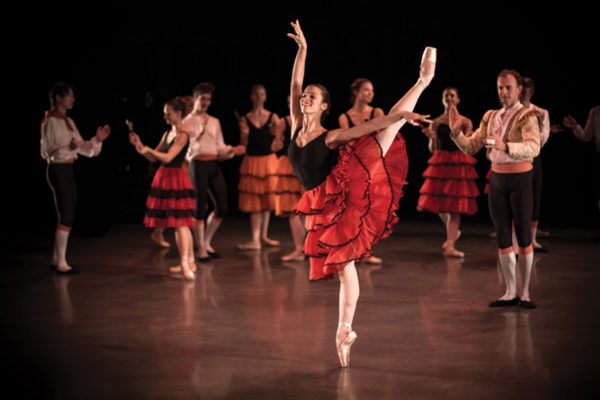Continued (page 5 of 9)
How did that happen?
Shelia: Nadia certainly had an interest in them.
Marion: We would watch them, the screeners would really enjoy them. We’ve always had high-quality films. The review process is a killer.
Shelia: The process is also incredibly fair. It’s a wonderful system. I’ve seen other systems that are much more biased. But the fact that five people have to view each film that’s submitted before it’s either tossed out or accepted for that next round is amazing.
Debbie: It’s nice for the filmmakers too. One of the worst parts of this job is handing out the rejection letters. You feel badly because you know every filmmaker has put a lot of time, money, and effort into it, but you can’t show them. Because we have so many screeners, and they get a numeric rating for seven different categories and classifications and they write comments, well, I got one call from a filmmaker this week who said, I got my rejection letter and I appreciate it, but would you mind just telling me what’s in the comments and why, so next time I can know what to do. And I could go and very easily get that information and it’s all so well done and professionally done as far as the ratings and the comments, and he was very appreciative. I hate to have to tell him, Oh, you’re film stinks. I softened the comments a little bit.
Patrick: Our relationship with the filmmakers starts from the very beginning. We are one of the only festivals – and I have to credit Josef Septimus Bean for this because he had a brilliant idea, we didn’t do it the first year I came on board but he suggested it last summer and we started it for last year’s festival – every filmmaker who submits us a film immediately gets a response from our office saying, We have received your film, thank you for submitting to our festival, it’s in the process, and it’s personalized to them with their name and the name of their film so it’s clear it’s not just a blanket thing going out. You wouldn’t believe the number of filmmakers who tell us, No other festival has ever just acknowledged receiving their film. Thank you for this. We’ve heard these wonderful things about Sedona before and this just proves it. And it really is quite astounding. So from the very initial moment of the mail coming into our office, we start that very personal relationship with the filmmaker, whether they end up in the festival or not. It’s a personal connect that they have.
We’re also, which I didn’t realize, one of fewer festivals that you’d think that absolutely sends an acceptance or rejection letter, every filmmaker knows exactly where they stand with our festival, and that’s not the norm. A lot of festivals only send acceptances, and if you don’t hear from them you just assume you’ve been rejected. From that perspective, they never have to wonder where they stand with us. By the last week in January, every single filmmaker will have heard from us, yea or nay. They get a personal phone call and a personal e-mail from us if they’re accepted, and they get something in the mail. We treat a three-minute film the same as an hour-and-a-half documentary. Those people are very important to us, and it goes along with what’s been established in the history of this festival, and we continue that and add to it each year. It’s a very personal experience for them.
And it carries over to when they get here.
Marion: We have a town that donates hotel rooms. And some luxurious ones too.
Patrick: Last year, we got 120 hotel rooms rooms donated for four nights each (that is 480 rooms!) for us to house our filmmakers. That is not just a reflection of this festival, it’s a reflection of this community, seeing the value of what we bring, and the economic impact that we have, for those four and now five days of this festival.
Shelia: That’s been one of the fun parts for me since the very beginning, putting people who come into hotel rooms. The three-minute people [makers of short films] call and say, You’re putting me in a hotel room?! They think they’ll be put up in somebody’s house, or in some little dump – well, we don’t have little dumps [in Sedona]. Beforehand, I’m e-mailing them back and forth about Sedona, and asking them who they’re coming with so we’ll know whether they’ll need one bed or two, and it’s thrown them. What I get before they get here is a sense of who they are apart from their film – so some of them may get nicer rooms. [Laughter] It’s an incredible closeness that I personally get, even if I don’t see them when they show up, which happens, though I go looking, it’s still a feeling of being connected to their film, and connected to who they are. It’s all here [points to head] and it’s in here [points to heart] and it’s really neat. It’s very special.



